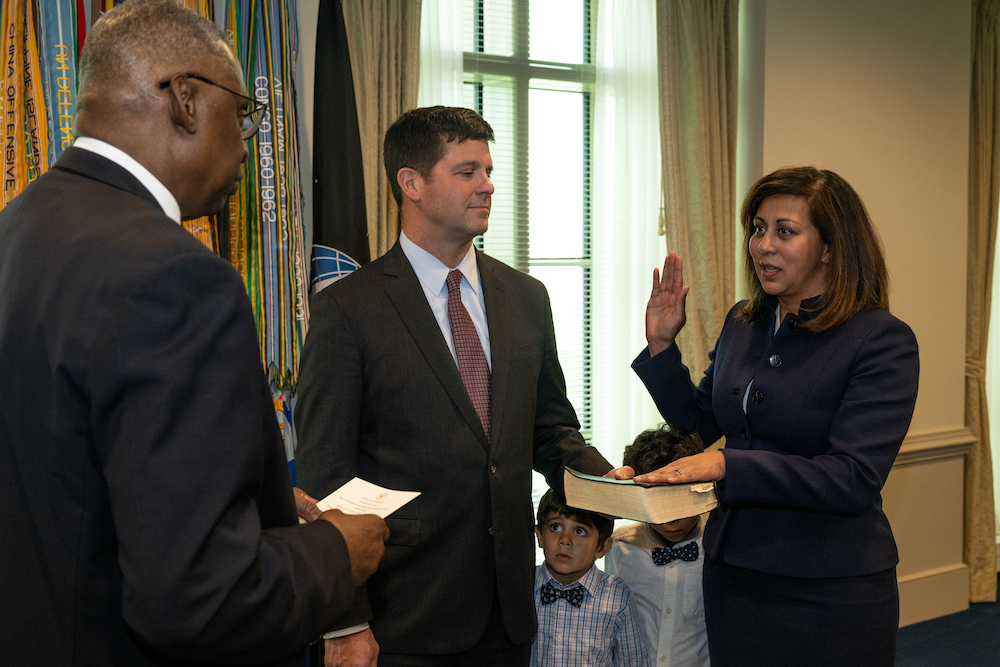Health Officials Call for Public Data System Modernization
NIH, CDC and FDA leaders see health data sharpening government’s understanding of COVID-19.

Top public health officials highlighted Tuesday the need to modernize public health data systems, analytics and capabilities to enable greater understanding of and response against COVID-19.
National Institute of Allergy and Infectious Diseases Director Dr. Anthony Fauci, Centers for Disease Control and Prevention Director Dr. Robert Redfield, FDA Commissioner Dr. Stephen Hahn and Health and Human Services Assistant Secretary for Health Adm. Brett Giroir testified before the House Energy and Commerce Committee that testing, contact tracing, research and development, and modernization of research databases and data capabilities are critical areas of current and future response work to COVID-19.
The officials emphasized that improving public health database infrastructure, data-sharing technologies and data analytics will be particularly key in tracking and preventing the spread of COVID-19, as well as in making significant research advancements in COVID-19 studies, treatments and vaccine development.
“Data is the backbone of any disease threat response,” Redfield said. “With resources that Congress has provided, data monetization is underway. We also must ensure that our laboratories have resilience, advanced technology, personnel expertise and supplies are being sourced.”
Congress began funding public health data surveillance and analytical infrastructure modernization efforts in fiscal year 2020, the officials wrote in their joint testimony, adding that the CARES Act provided an additional $500 million toward that effort. The testimony emphasized that strengthening data capabilities will allow for improved digital contact tracing and, ultimately, the ability for the country to properly reopen.
The testimony highlighted several ways in which data-sharing initiatives and technologies have helped the CDC track the impact of COVID-19 on health care facilities at the state, tribal, local and territorial levels.
“CDC is committed to making data available to the public, while protecting individual privacy,” the testimony said. “CDC’s population-based COVID-NET system monitors COVID-19 associated hospitalizations that have a confirmed positive test in greater than 250 acute care hospitals in 99 counties in 14 states. … CDC also is augmenting the existing National Healthcare Safety Network to monitor and analyze the capacity of the health care system daily — including hospitals and nursing homes — so that federal, state and local officials can adjust their response and mitigation efforts as needed.”
Data is also critical for supporting lab research, the officials said. CDC labs, for instance, have been applying sequencing technologies to COVID-19 and have shared respective data through domestic and global databases. The CDC is also leading the SARS-CoV-2 Sequencing for Public Health Emergency Response, Epidemiology and Surveillance (SPHERES), a “new national genomics consortium to coordinate SARS-CoV-2 sequencing across the United States to do large-scale, rapid genomic sequencing of the virus.”
The officials further underscored that data is critical in making discoveries for serologic testing and for tracking the medical supply chain for critical materials. Despite that importance, there are improvements in building and modernizing these data-driven systems.
“Some of the biggest limitations — and I know that everyone is working on this — is the national data infrastructure we need,” Giroir said. “When we started out, I’m calling up 100 hospitals a day trying to understand who’s on an ICU bed, who’s not, who has a ventilator, how much you have left, and we got through this early not by systems, but by people working 24/7.”
“What we’ve learned is that we have an access to information issue,” Hahn added. “We’ve learned that we need to collect real-world evidence in real time during an emergency, … so your support for real-world evidence generation would be incredibly helpful.”
The CDC is also racing to improve demographic representation in COVID-19 testing and infection data. Only 18% of COVID-19 reports from medical facilities included racial and ethnic information in its data, and while that number has grown to 43% as of early June, it is working in continue improving minority and underserved population representation in COVID-19 data, Redfield said.
Giroir added that he sees data-sharing practices enabling underserved communities to receive more information about how to protect themselves against COVID-19 and that digital solutions would be critical.
While the officials advocated in favor of data-driven and digital solutions, they also advocated in support of telehealth — another area of technological growth during the pandemic — as the nation continues to navigate COVID-19. Giroir said that as of the week of Jan. 15, the Centers for Medicare and Medicaid Services only reported 500 telehealth visits across its beneficiaries. As of April 15, however, that number skyrocketed to 150,000. The officials advocated for the continued long-term support of telehealth.
“I believe that telemedicine is a really important component — should have been even more implemented, but as we look forward in the future, I think you’re going to see a lot more of that,” Fauci said.
This is a carousel with manually rotating slides. Use Next and Previous buttons to navigate or jump to a slide with the slide dots
-

How Tech Enables Environmental Justice at EPA
The agency wants to eliminate bias and establish new tech standards to reduce greenhouse gas emissions.
39m listen -

The CAIOs Leading Responsible AI Development Across Government
Since the White House's AI executive order, federal agencies are in the process of naming chief artificial intelligence officers.
7m read -

How TMF is Helping Agencies Accelerate Tech Modernization
The program launched a new AI pilot to expedite TMF applications as agency leaders urge more to consider applying for funds.
4m read -

Defense Board to Pitch Solutions for Closing Tech Talent Gaps
Defense Innovation Board members cite need to modernize people management the same way government modernizes technology.
4m read




